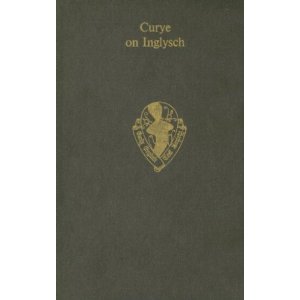History
It all depends on how far you want to go back. Here is a website which claims that there was no stone age.
There Never Was A Stone Age
In the supposed period described by evolutionists as the stone age, people worshipped, listened to the message preached by the envoys sent to them, constructed buildings, cooked food in their kitchens, chatted with their families, visited their neighbors, had tailors sew clothes for them, were treated by doctors, took an interest in music, painted, made statues and, in short, lived perfectly normal lives. ..... there have been changes in technology and accumulated knowledge over the course of history, but human beings have always lived as human beings.
More at http://www.thestoneage.org/stone_age_introduction.php
The History of Recipes
It is possible to read the history of `recipes` way back into antiquity, in truth as far into history as Egypt at the time of the Pharoahs*, and maybe further still. Having said that, sadly, these old cookbooks were just simple hieroglyphic ** instructions for preparing food.
Later, there were two interesting recipe books which were published in the 14th Century : one book called `Forme of Cury`, and another named `Curye on Inglish`[see picture below]. Amusingly, they are nothing to do with the indian curry that appears on menues today, but instead recipes for the types of meals prepared by the chefs of the rich people of that time.
Later on, in the 15th century, knights returning from the crusades brought back many foods and spices from the holy land, such as coriander, parsley, basil and rosemary. These new foods and tastes led to an eruption in recipe manuscripts, most of which are now in private libraries.
The arrival of TV brings us cooking programs and the demand for the spin-off recipe books.
And that neatly brings us to the present day and the invention of the internet, permitting us all to search through massive numbers of recipes just like those on this recipe site.
Medieval Recipes During the Late Middle Ages
Have you ever wondered about the medieval recipes used by peasants and nobles? If you said "yes" you are sure to find the information on this page very interesting. We'll be taking a look at the eating habits of peasants and nobles during the late Middle Ages.
The late medieval period is usually considered to be from between 1300 and 1500 CE. We refer to the period after the medieval as the Renaissance or early modern period.
Food in later medieval Europe was more diverse and varied than foods from before, but a number of foods that we are very familiar with today were absent during the Middle Ages.
It wasn't until well into the seventeenth century that New World foods such as potatoes, tomatoes, peppers, squash and corn were commonly accepted.
Although they were discovered in 1492, near the end of the medieval period, these foods weren't considered fit for European consumption. This means that medieval recipes would have used turnips, parsnips, eggplant and other vegetables where we would expect to use items from the New World.
What people ate in the Middle Ages would also have been different depending on social class.
The cover of the very old book mentioned above - "Curye on Inglish" Note the different spellings given.
This project is about finding similar books and other historical items which help us understand Welsh food history.
